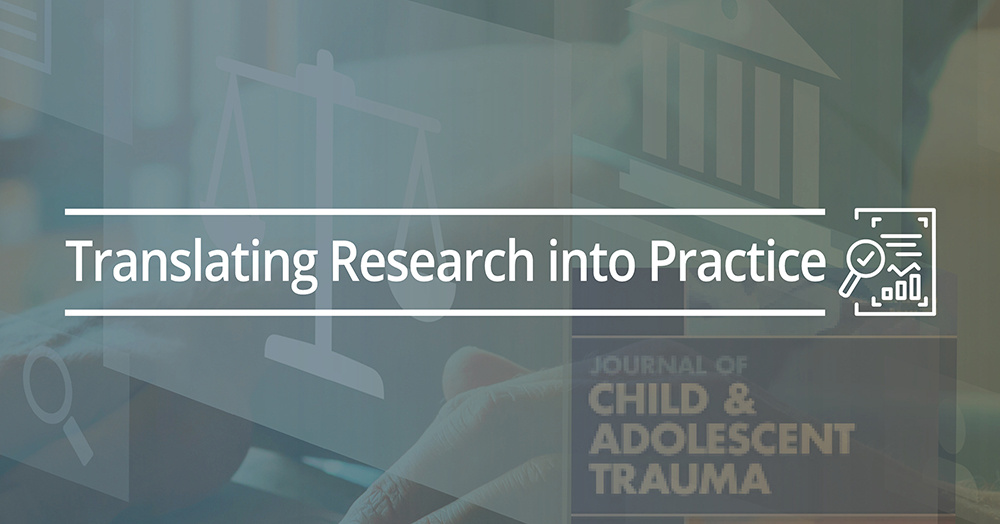Featured Article
Article Title
Enduring Effects of Early Life Traumas on Adult Suicidal Ideation
Authors
Muhammed Yıldız; Applied Sociology and Criminal Justice Department, Utah Tech University, Utah
Uğur Orak; Department of Sociology and Anthropology, Middle Tennessee State University, Tennessee
Ramazan Aydoğdu; General Education & Health Sciences Department, Baptist Health Sciences University, Memphis
Abstract
Exposure to traumas early in life has been found to have a range of negative health effects later in adulthood, including a higher risk for suicidal behavior. Using data from the Waves I (1994/95) and IV (2008) of the National Longitudinal Study of Adolescent to Adult Health (N=14,385; 49.35% female; Mage in Wave IV=29), this study examines the effects of exposure to three different types of early life traumas—emotional abuse, physical abuse, and sexual abuse before the age of 18—on adult suicidal ideation. Guided by the stress process model incorporated with a life-course perspective, potential mediating roles of psychological distress, subjective powerlessness, and perceived social rejection were also investigated. A series of regression and Karlson-Holm-Breen (KHB) mediation analyses were performed using Stata 14 to assess the total, direct, and indirect effects. All three early life trauma measures were found to be significantly and independently associated with a higher risk of suicidal ideation in adulthood. A substantive portion (between 30 and 50%) of the effects was mediated by psychological distress (i.e., depression and anxiety), subjective powerlessness, and perceived social rejection. The general policy implications of this study include evaluating suicidal individuals for prior childhood abuse experiences and assessing abuse survivors for suicidality.
Keywords
Physical abuse; sexual abuse; emotional abuse; suicidal ideation
Summary of Research
The article addresses the significant issue of how early life traumas, including physical, sexual, and emotional abuse, impact adult suicidality. This issue is critical as it explores the profound and lasting effects of childhood adversities on mental health and suicidal behaviors in later life. The study aims to fill gaps in the existing literature by concurrently examining different types of childhood traumas and their combined influence on adult suicidality. Additionally, it seeks to understand the mediating roles of psychological distress, subjective powerlessness, and perceived social rejection, thus providing insights into the mechanisms through which early trauma influences adult suicidal behaviors.
Previous research has established a strong link between childhood traumas and increased risk of suicidality in adulthood. However, many studies have focused on a single form of trauma, which may overlook the combined effects of multiple types of abuse. There is also a need for research on large community samples to avoid skewed results from clinical samples, which may overemphasize the negative outcomes. Moreover, past studies have primarily been descriptive, lacking efforts to identify mediating variables that explain how early traumas lead to suicidality.
The study utilized data from the National Longitudinal Study of Adolescent Health involving 14,385 individuals aged 24 to 32. Measures included adult suicidal ideation assessed by asking participants if they had seriously thought about committing suicide in the past 12 months, and early life traumas (emotional, physical, and sexual abuse) based on retrospective reports. Psychological distress was measured through depression, anxiety, and substance use disorders, while subjective powerlessness and perceived social rejection were assessed by questions about control over life events and feelings of isolation, respectively. Control variables included demographics such as sex, age, family structure, education, income, employment, marital status, parental status, and race/ethnicity. The study used regression models and the Karlson-Holm-Breen (KHB) method to analyze the direct and indirect effects of childhood traumas on adult suicidal ideation.
The findings showed that each form of childhood trauma was significantly and independently associated with a higher risk of suicidal ideation in adulthood. Notably, emotional abuse had a stronger impact on suicidal ideation than physical or sexual abuse, underscoring the importance of recognizing emotional abuse as a critical risk factor for suicidality.
The mediation analyses revealed that the proposed mediators—psychological distress, subjective powerlessness, and perceived social rejection—accounted for 30-50% of the total effects of early traumas on adult suicidal ideation. Emotional abuse's impact on suicidal ideation was significantly mediated by depression, anxiety, subjective powerlessness, and perceived social rejection. In contrast, the effects of physical and sexual abuse were mediated by depression, subjective powerlessness, and perceived social rejection, with no significant mediating effect from substance use disorders. Interestingly, the direct effect of physical abuse lost significance after accounting for these mediators, highlighting the stronger roles of perceived social rejection and subjective powerlessness over internalizing symptoms like depression and anxiety.
Moreover, significant relationships between emotional and sexual abuse and suicidal ideation persisted even after adjusting for the proposed mediators, suggesting that other mental health outcomes (e.g., anger, antisocial behavior) and psychosocial mechanisms (e.g., social support, problem-solving behavior) might also play crucial roles. These findings highlight the complex pathways through which early traumas influence adult suicidality and indicate the need for further research to identify additional mediating mechanisms and better understand how different types of trauma translate into suicide-related behaviors.
Translating Research into Practice
Assess for childhood traumas: Given the strong association found between childhood traumas (emotional, physical, sexual abuse) and adult suicidal ideation, clinicians should routinely inquire about histories of childhood abuse when evaluating suicidal individuals.
Consider tailored therapies: Identifying childhood abuse histories can guide clinicians to consider empirically based therapies specifically designed for individuals with such experiences, some of which directly address suicidality.
Utilize evidence-based treatments: Clinicians treating abuse survivors should be aware of the robust link between childhood traumas and suicidality, utilizing effective treatments like Dialectical Behavioral Therapy (DBT), Mindfulness-Based Cognitive Therapy (MBCT), and Cognitive Behavioral Analysis System of Psychotherapy (CBASP), which have shown promise in reducing suicidal behavior.
Address perceived social rejection and subjective powerlessness: Recognize the significant mediating roles of perceived social rejection and subjective powerlessness in the relationship between childhood traumas and adult suicidal ideation. Implement programs that enhance interpersonal skills and bolster the sense of control for individuals with childhood trauma histories.
Consider support groups and mentoring: Programs such as support groups, one-to-one mentoring, and coaching can be effective in preventing suicidal outcomes by providing avenues to improve interpersonal skills and enhance the sense of control, especially for survivors of childhood traumas.
Other Interesting Tidbits for Researchers and Clinicians
“The findings should be interpreted within the context of the limitations of the study. First, this study is limited in terms of measures for some variables. Childhood traumas were measured using a retrospective self-report instrument. Although this type of measurement is widely used, it is possible that recall or response biases may have influenced participants’ reports of abuse. It should be noted, however, that individuals’ recollection of negative childhood experiences tends to be fairly accurate and free of mood-congruent recall biases (Fergusson et al., 2011). Nonetheless, it may be beneficial for future studies to consider other methods of ascertaining experiences with early childhood traumas (e.g., interview-based approaches). One-item and dichotomous measure of suicidal ideation was previously used by many researchers (e.g., Boyda et al., 2020; Yıldız & Solakoglu, 2019), but a better-constructed dimensional tools such as Adult Suicidal Ideation Questionnaire (Reynolds, 1991) would probably provide a better capture of suicidal ideation among adults. It is also important to note here that the term “committing suicide” is considered stigmatizing and no longer used by current researchers. Similarly, internal consistency of the perceived social rejection measure was low. A better constructed scale would probably provide a more reliable measure of individuals’ perceived interpersonal relationships. Unfortunately, alternative scales were not available in Wave IV questionnaire. Second, as cross-sectional data were used, the temporal ordering of suicidal ideation and proposed mediators cannot be determined since both were measured at Wave IV. It is highly possible that suicidal ideation preceded some of the proposed mediators, as the questionnaire item used to measure suicidal ideation covered the 12 months-period before the interview, whereas the items used to assess proposed mediators were either covered the current time of the interview or only the past several weeks. It is assumed that individuals’ depression, anxiety, substance use disorders, subjective powerlessness and perceived social rejection were at the same levels 12 months before Wave IV. Although the theoretical approach and past research guiding these analyses improve our ability to infer directionality, further research employing a fully longitudinal design is required before causal inferences can be made” (p. 305).




























